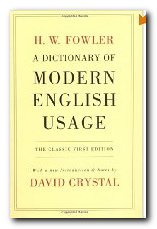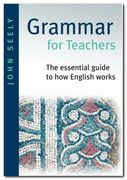free pages from our English Language software program
Figures of speech – definition
![]() ‘Figures of speech’ is a term used to describe the devices employed to add colour, decoration, and imaginative expression to linguistic use.
‘Figures of speech’ is a term used to describe the devices employed to add colour, decoration, and imaginative expression to linguistic use.
![]() They distinguish figurative or imaginative language from its use in a literal manner.
They distinguish figurative or imaginative language from its use in a literal manner.
![]() Common figures of speech include the following:
Common figures of speech include the following:
alliteration, assonance, cliché, metaphor, metonymy, onomatopoeia, oxymoron, paradox, simile, synecdoche
![]() These are also known as ‘rhetorical devices’.
These are also known as ‘rhetorical devices’.
Examples
Literal – He ran quickly down the street.
Simile – He ran like a hare down the street.
Metaphor – He hared down the street.
Use
![]() Many people use these devices quite unconsciously as part of everyday communication.
Many people use these devices quite unconsciously as part of everyday communication.
![]() For instance, a statement such as ‘His plan was given the thumbs down’ uses a figurative term, not a description of people waggling their thumbs. [It dates back to a Roman emperor’s decision on a gladiator’s fate.]
For instance, a statement such as ‘His plan was given the thumbs down’ uses a figurative term, not a description of people waggling their thumbs. [It dates back to a Roman emperor’s decision on a gladiator’s fate.]
![]() If we say ‘I’ve told him a thousand times!’ this is not literally true. We are using a figure of speech [hyperbole, or exaggeration] to make a point.
If we say ‘I’ve told him a thousand times!’ this is not literally true. We are using a figure of speech [hyperbole, or exaggeration] to make a point.
![]() NB! Don’t try too hard to use figures of speech. They’ll come naturally.
NB! Don’t try too hard to use figures of speech. They’ll come naturally.
![]() Figures of speech or rhetorical devices are present in all cultures. It seems that it is in the very nature of linguistic discourse for speakers to act creatively. Indeed, it is that creativity in language use which ultimately divides language use in humans and animals.
Figures of speech or rhetorical devices are present in all cultures. It seems that it is in the very nature of linguistic discourse for speakers to act creatively. Indeed, it is that creativity in language use which ultimately divides language use in humans and animals.
![]() A child begins to be creative by using various figures of speech at the very beginning of the acquisition process. Words such as ‘bang’, ‘smack’, ‘moo’, and ‘baa’ are all onomatopoeic figures of speech common to a child’s early vocabulary.
A child begins to be creative by using various figures of speech at the very beginning of the acquisition process. Words such as ‘bang’, ‘smack’, ‘moo’, and ‘baa’ are all onomatopoeic figures of speech common to a child’s early vocabulary.
![]() It is useful to contemplate a continuum of which the two opposites are literal and non-literal in terms of linguistic expression. We could envisage a statement of fact towards one extreme and a metaphor towards the other.
It is useful to contemplate a continuum of which the two opposites are literal and non-literal in terms of linguistic expression. We could envisage a statement of fact towards one extreme and a metaphor towards the other.
![]() The statement of fact might be This is a wooden door.
The statement of fact might be This is a wooden door.
![]() An example of a metaphor might be The sunshine of your smile.
An example of a metaphor might be The sunshine of your smile.
![]() These two utterances comprise five words each, yet the metaphor says much more than the factual statement. Not only does it say more but it speaks of vast and abstract elements such as love, the sun, gesture, happiness, human warmth, pleasure and possibly more.
These two utterances comprise five words each, yet the metaphor says much more than the factual statement. Not only does it say more but it speaks of vast and abstract elements such as love, the sun, gesture, happiness, human warmth, pleasure and possibly more.
![]() Figures of speech are often used to express abstract emotional or philosophical concepts. The figure of speech attaches the abstract concept to a material object and thus is instrumental in creating powerful and dynamic communication.
Figures of speech are often used to express abstract emotional or philosophical concepts. The figure of speech attaches the abstract concept to a material object and thus is instrumental in creating powerful and dynamic communication.
![]() Original figures of speech are valued in both speech and in writing. We respect the ability to generate these. Politicians for instance often use figures of speech, and are variously successful with this practice.
Original figures of speech are valued in both speech and in writing. We respect the ability to generate these. Politicians for instance often use figures of speech, and are variously successful with this practice.
![]() Churchill’s image of ‘the iron curtain’ has stayed with us for over fifty years, although the phenomenon it described no longer exists. ‘The cold war’ superseded it, during which it was the threat of someone ‘pressing the button’ which was on everyone’s mind.
Churchill’s image of ‘the iron curtain’ has stayed with us for over fifty years, although the phenomenon it described no longer exists. ‘The cold war’ superseded it, during which it was the threat of someone ‘pressing the button’ which was on everyone’s mind.
![]() The ‘rhetorical question’ is a figure of speech favoured by politician and lay person alike. It is a powerful device because, although it has the appearance of being a question, it often acts as a form of persuasion or criticism.
The ‘rhetorical question’ is a figure of speech favoured by politician and lay person alike. It is a powerful device because, although it has the appearance of being a question, it often acts as a form of persuasion or criticism.
![]() ‘Is our country in danger of becoming a hot-bed of sleaze?’ we might hear a politician ask. ‘Are we going to stand by and let these atrocities continue?’ Listening to our car radio we might mentally frame an answer to this kind of question – or at least we might be drawn into contemplating the issue.
‘Is our country in danger of becoming a hot-bed of sleaze?’ we might hear a politician ask. ‘Are we going to stand by and let these atrocities continue?’ Listening to our car radio we might mentally frame an answer to this kind of question – or at least we might be drawn into contemplating the issue.
![]() At a more domestic level we might be asked ‘What time do you call this?’ or ‘How many times have I told you …?’ These are questions which actively discourage any answer. They are a form of rebuke which is an established ritual. As competent language users, we know them and participate in the ritual – by not answering, or responding to the ‘real’ (unstated) criticism.
At a more domestic level we might be asked ‘What time do you call this?’ or ‘How many times have I told you …?’ These are questions which actively discourage any answer. They are a form of rebuke which is an established ritual. As competent language users, we know them and participate in the ritual – by not answering, or responding to the ‘real’ (unstated) criticism.
![]() Another figure of speech which spans the social spectrum is the cliché. These are often derided, and the word itself has become a pejorative term. However, the cliché is very much ‘alive and kicking’, especially in the context of football. ‘Over the moon’ about a result and ‘gutted’ to hear the news, are just two such figures of speech heard almost daily over the popular media.
Another figure of speech which spans the social spectrum is the cliché. These are often derided, and the word itself has become a pejorative term. However, the cliché is very much ‘alive and kicking’, especially in the context of football. ‘Over the moon’ about a result and ‘gutted’ to hear the news, are just two such figures of speech heard almost daily over the popular media.
![]() The cliché proves its function by its prolific use. Perhaps it is its over-use, or its application in inappropriate contexts which may cause distaste.
The cliché proves its function by its prolific use. Perhaps it is its over-use, or its application in inappropriate contexts which may cause distaste.
![]() Figures of speech are also known as images. This indicates their function well. The outcome of using them is that the listener or the reader receives a multi-dimensional communication. Lewis Carroll coined the term ‘portmanteau’ for words which are packed with layers of meaning. Although Carroll’s usage is slightly different from that of figures of speech, it does illustrate that we have a strong drive as language users to convey meaning colourfully and economically.
Figures of speech are also known as images. This indicates their function well. The outcome of using them is that the listener or the reader receives a multi-dimensional communication. Lewis Carroll coined the term ‘portmanteau’ for words which are packed with layers of meaning. Although Carroll’s usage is slightly different from that of figures of speech, it does illustrate that we have a strong drive as language users to convey meaning colourfully and economically.
Self-assessment quiz follows >>>
© Roy Johnson 2003
English Language 3.0 program
Books on language
More on grammar

